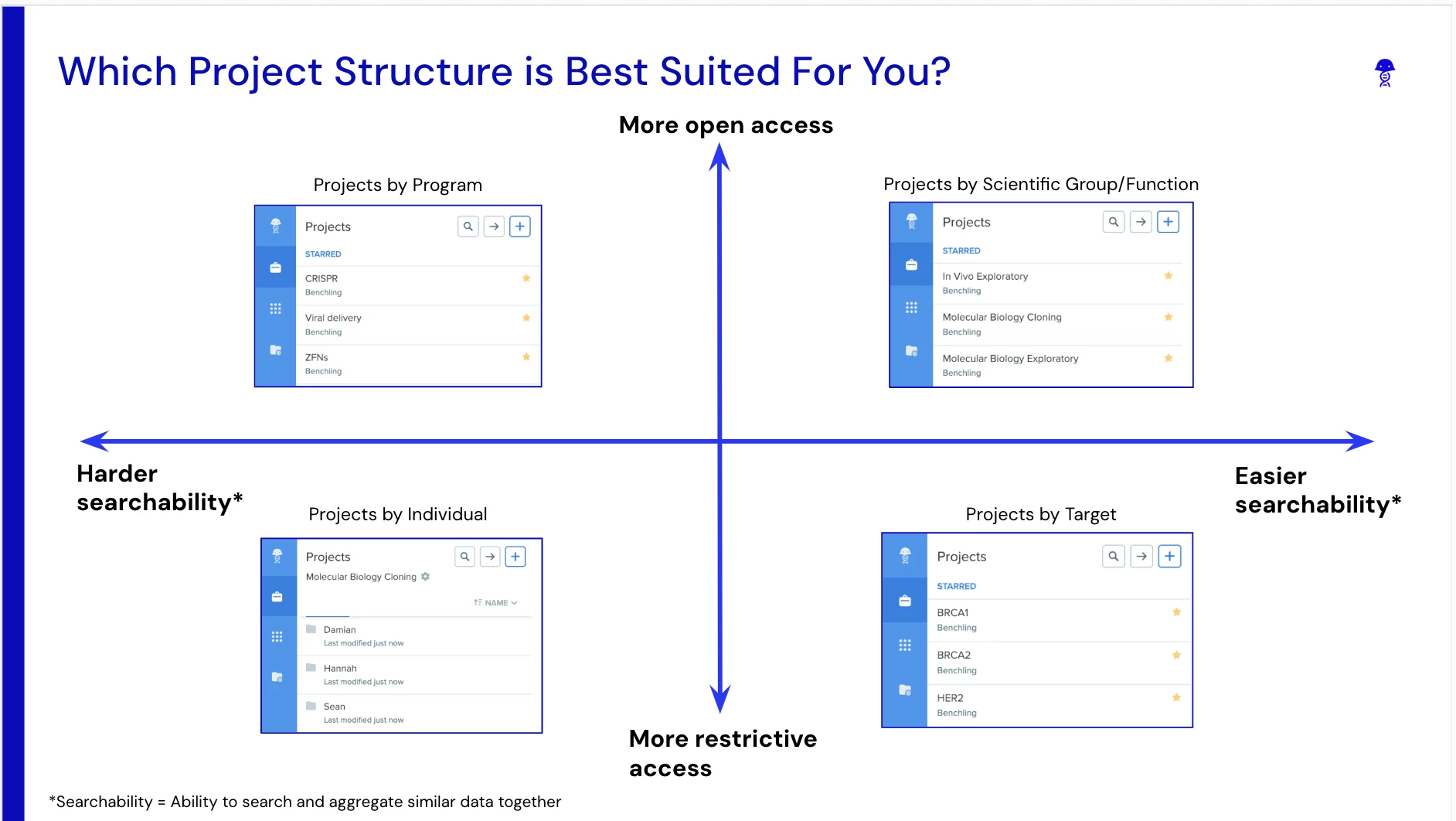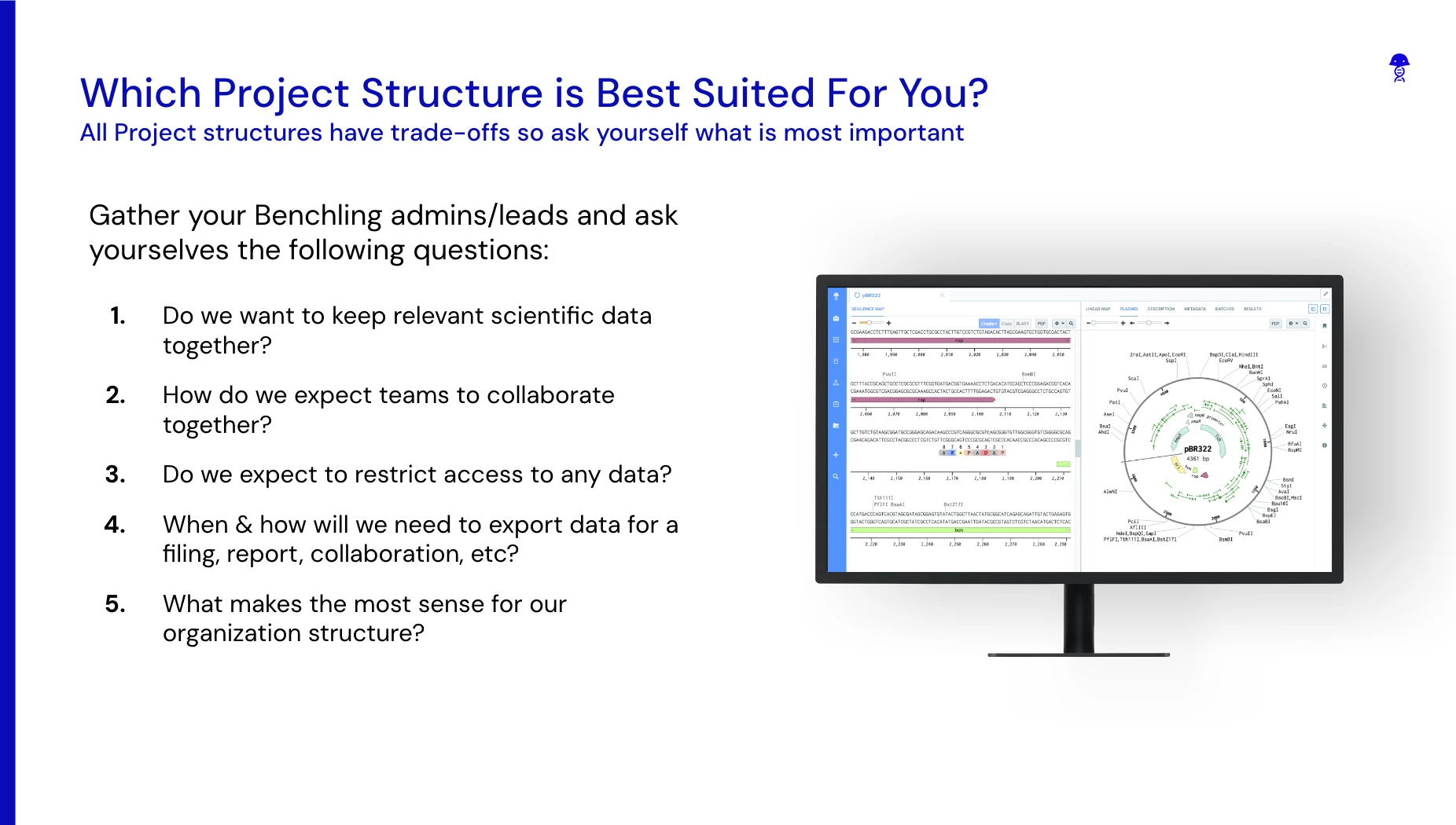Another Best Practice Guide is hot off the press, and this time it’s about Project Structure and Organization!
Your Benchling projects and folders can get messy with time, especially if your lab’s organization has evolved with time! Being able to quickly find the work your team is doing is made easier when you have a good strategy for organizing your Benchling Projects. Check out our guide for our recommended best practices around maintaining your team’s Project Structure.
Here’s what to expect in this Best Practice Guide:
- Why is Project structure important? - Get a deeper understanding of why Project Structure can make your team’s work in Benchling easier to handle
- Project permissions overview - Project Permissions can help you maintain private projects limited to teams, and help keep the right information freely available
- How do you plan your Project Structure - Walk through some key questions you’ll want to ask to ensure you structure your projects efficiently
Full BPG linked below!






